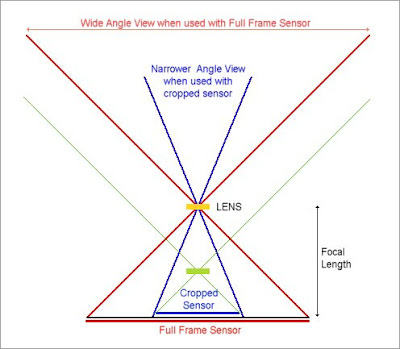Crop Sensor (APS-C) Cameras and Lens Confusion
5:23 PM
Despite the fact that so called "crop sensor" digital SLRs have been with us for over 5 years, there's still a huge amount of confusion out there about exactly what a crop sensor camera is and what effect is of using a lens with a crop sensor camera rather than a full frame camera. The photography forums are full of confused newcomers asking about focal length, field of view etc.
First, what is a crop sensor camera? Well, it's simple. A full frame 35mm camera ( whether it uses film or a digital sensor) records an image that is approximately 36mm x 24mm in size. In the early days of digital sensors it was not possible to make digital sensors that big in any sort of quantity, and the ones you could make were so expensive that hardly anyone would have been able to buy a camera which used one. So camera makers decided to use a smaller sensor, around 15mm x 22.5mm. This just happens to be close to the image size which was used with the short-lived APS film format, specifically the APS-C image size of 25.1 × 16.7 mm (there was also APS-H and APS-Panoramic format).








0 comments